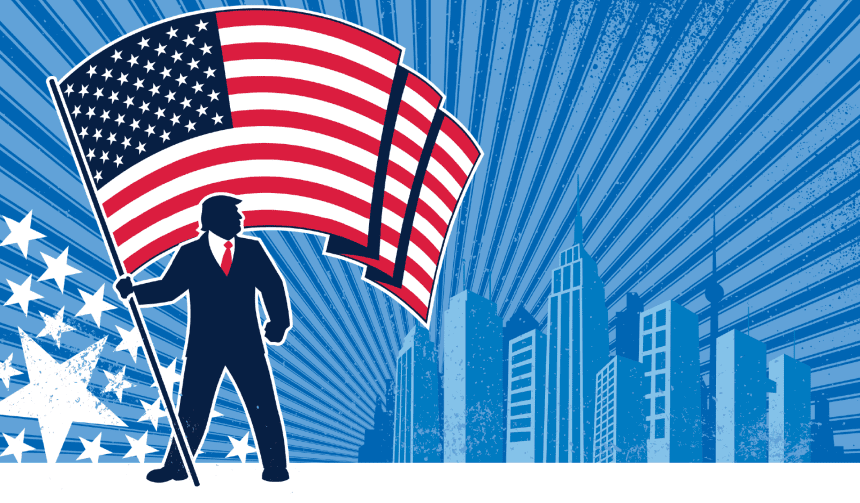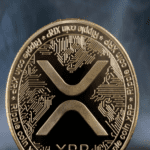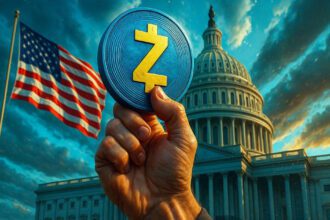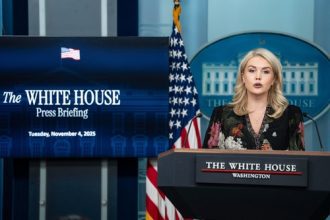China’s Secret Crypto Comeback: Why Trump Says They’re Winning
Why Trump (and You) Think China Is ‘Beating’ (or Cheating) at Crypto,The Sound Bite That Didn’t Make Sense When Donald Trump said on U.S. television that “China is getting into it very big right now” about crypto, many did a double take. Besides, hasn’t Beijing prohibited crypto trading and mining already in 2021? Yes, it did. So, why is China still “big into crypto”? Which is to say, China didn’t secretly cancel its ban or anything like that mainland policy and Hong Kong’s pro-crypto pivot and the digital yuan and big gray-market stablecoin flows all combine into quite a reality in the space. In short, Trump is gesturing toward the entirety of what’s there to be seen, not some sort of official headline.
The Ban Was Real but Not the Whole Story. China did crack down in 202, Exchanges fled, miners took their work to friendlier places, and the official speculation was slammed. That part is not in dispute. But banning speculative retail trading is not the same thing as “China has zero footprint in crypto.” Beijing has always drawn this distinction between uncontrolled, permissionless assets and state-aligned or even merely tolerated digital finance. And that gap is where it’s at today.
Trump’s Take Is Geopolitical, Not Technical, So why should Trump describe it as a threat? It’s because he’s not speaking as a developer or trader he is speaking as someone calculating national advantage. From his perspective, anything that China is building in the realm of digital money CBDCs, Hong Kong corridors, offshore railways for capital amounts to competition with the U.S. And competition, in Trump’s lexicon, is tantamount to a rallying cry: “they’re doing it, so we should do it better.” This dovetails with other recent Trump-world messaging that casts crypto as a component of a broader U.S.China tech race.
Hong Kong and its “useful loophole, Here’s a huge part of the equation, Hong Kong is playing an entirely different game than the mainland. As Beijing maintains the ban, regulators in Hong Kong have been letting licensed virtual asset platforms in and even access global liquidity. That is to say “China,” in terms of the broader Chinese economic sphere definitely does have an active, regulated, internationally connected crypto hub. If you’re a politician in Washington staring down at the map from 30,000 feet, there’s no point in splitting hairs between “Hong Kong SFC” and “Beijing PBoC.”
You just say, China is in. Timing Matters. Trump’s statement came just as Hong Kong was accelerating its integration with global markets notably the SFC was indicating it would ease constraints right during FinTech Week which made the entire region look more open than a week earlier. This is the kind of headline that reads in America as “China moves on crypto while we dicker.”
China Is “Doing Crypto” the Hard Way With the Digital Yuan, Another big source of confusion: China’s central bank digital currency, the e-CNY. Beijing has promoted it at scale, tested it with cross border pilots and even connected parts of it to Hong Kong. To casual observers and to be sure, politicians a country launching a sovereign digital currency is one that’s very interested in digital assets. While a CBDC is not Bitcoin, it still suggests that China is updating money more quickly than many Western jurisdictions. So Trump’s statement may be imprecise, but it does match that impression.
CBDC vs. Crypto When Politics Blurs the Line, When industry insiders marinate in the juice, we can’t help but want clean definitions: CBDC = central; crypto = total decentral. But political messaging isn’t about purity, it’s about power. If China can settle transactions more quickly, surveil flows more effectively and connect trading partners via e-CNY rails, well then that’s a strategic capability. To Trump, that belongs in the same mental bucket as “they’re beating us in digital money.” That is why he can say even they banned open trading.”They’re big into it”
Gray Market Stablecoins Are the Secret in the Open, And then there’s the thing that everyone knows but no one in Beijing really wants to champion, Chinese exporters and traders continue to settle cross-border with stablecoins, such as USDT, in order to evade capital controls. It doesn’t for China to legalize Binance futures for retail or anything it just requires enough tolerated breathing room for commerce to continue moving forward. You put that together with the licensing in Hong Kong and the CBDC, you get pretty much a country that is doing digital finance at scale.That’s the ecosystem that Trump is responding to.
Varied Capital Controls Drive Demand for Rails Crypto Makes Networks Mechanisms that restrict the free flow of capital result in demand for resistance breaking technology, that reduces barriers to flows of information and digital currency. If you can’t easily get money out, and yet you still have to pay partners, then you start looking for neutral things that are like dollars online. Stablecoins are perfect. Which is to say, Chinese economic actors can be active users of crypto rails while Beijing yet maintains the political upside of saying “we banned crypto.”
Hardware & Infrastructure is Still Built in China, Let’s not forget, Chinese companies are still large players in hardware, mining rigs, chip design and other components of the crypto infrastructure stack. Even if mining went abroad after 2021, the supply chains did not vanish. To a politician, that appears to be “they control parts of the industry.” Once again, that feeds Trump’s narrative about how China is “into” crypto.
Which Explains Why Trump Says It Out Loud, Tech isn’t something Trump’s ever talked about without bringing up a competitive race. He did it with A.I. now he’s doing it with digital assets: “If they’re doing it, we can’t fall behind.” It’s a simple, effective line. In mentioning China, he accomplishes three things in one go, He makes crypto a national security adjacent issue.
He recasts regulatory support for crypto as patriotic. He is signaling to the industry that the U.S. should be more friendly than rival locations.
Making Crypto a U.S. vs. China Story Is Politically Beneficial to Him Voters grok competition before they grok Layer 2 scaling. “China is getting into it” sounds better than “Hong Kong’s virtual asset framework is maturing.” It’s not a regulatory memo it’s messaging.
The True Paradox Ban Plus Expansion, So yes, there is a paradox: Beijing’s official posture remains prohibitionist even as the fringes of the Chinese financial sphere are only getting more plugged into digital assets. But such paradoxes are typical of big, state-led economies. You can outlaw speculative retail trading to keep the upper hand but also, Piloting a CBDC,
Allowing Hong Kong to operate a global-facing regime, Tolerating stablecoin workarounds for exporters,
And backing domestic companies that sell crypto infrastructure overseas. In that context, it’s hardly difficult for an American lea der, putting together a group of nations to fight with Hindi sidekicks against the wily Chinese and their dastardly virus, to glance at South Asia: “I guess those guys should go Invited!”
What This Means for the U.S. If the U.S. continues to send mixed messages enforcement-first, courts do battle, murky market structure as China’s offshoots and adjacent regions move toward clearer frameworks, the risk is of America appearing even slower. Trump’s statement is essentially a criticism of that: His warning is that digital assets are a front in the broader tech and finance conflict, and America can’t wait for perfect clarity before moving forward. Gate.com
Crypto as a Strategic, Not Only Market Asset, The deeper point is that crypto is no longer just price charts it’s payment corridors, reserves, programmable money and influence over standards. Whoever moves first on those will be able to set the rules. Which is the last thing precisely Trump doesn’t want China to be first at doing.
So, Was Trump Wrong? Not quite but he was wide. If you’re scoring him on technical accuracy, you’d say: “Mainland China continues to outlaw the trading and mining of crypto.” If you’re grading him on strategic insight, you’d say: “He’s picked up on the fact that a Chinese sphere of influence is very lively around digital finance, so we’d better be in there.” That’s the spirit of his comment, and it accords with what’s going on in Hong Kong and the e-CNY.
We should interpret Trump’s line as a political tap to U.S. decision makers not to cede leadership in crypto and digital money to the jurisdictions that move first, even if they appear restrictive on paper. The Chinese model demonstrates that you can tighten at home and still extend your reach abroad. The American model should be the reverse: Empower at home in order to project even more abroad.
China didn’t quietly un-ban Bitcoin. And what it did and the states around it did was set up a layered, state shaped (and often gray) means of interacting with digital assets. To be sure, Hong Kong’s plug-and-play. The hurry around the digital yuan. The workarounds for stablecoins. The continuing role of China in infrastructure all add up to an economy that is, in effect, “in” the digital money game. That’s the truth Trump was getting at. And the real lesson for the U.S. is straightforward: If your adversary proves himself wiling to be playful with money, you cannot afford to be the one still debating definitions.
Was China’s 2021 crypto ban really ‘reversed’? No. The ban on speculative trading and mining on the mainland remains in place. What’s new is activity around China and especially Hong Kong and the advent of the digital yuan. What does Hong Kong have to do with all this anyway? Because Hong Kong is actually building a legal, international crypto market while still connected with China in ways that make the entire Chinese sphere appear more engaged in crypto than the ban on the mainland would suggest.
Is a CBDC like the e-CNY just another version of Bitcoin? No. A CBDC is centralized and state owned but it’s also, politically, an indication that China is putting money behind digital money, which is why U.S. policymakers lump it into the same conversation. Do Chinese companies still matter in crypto? Yes. Despite domestic rules, Chinese aligned companies continue to provide hardware and infrastructure to the global industry that still ties it back to China. “TodayOnChain.com‘
What Trump actually means He’s telling American audiences that digital assets are a matter of competitiveness and if China is throwing punches in its sphere, then America needs to be ready to counterpunch.






















